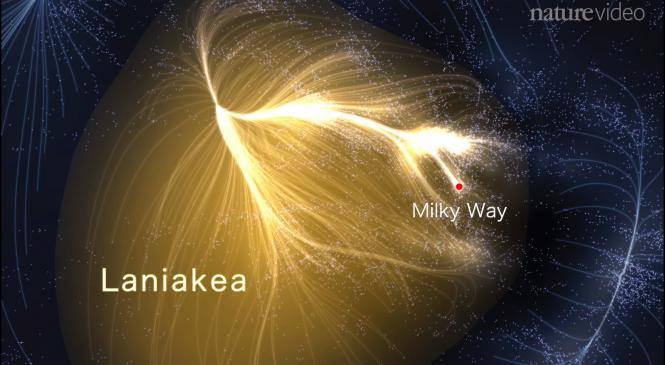 “Discounting cosmic expansion, their map shows flow lines down which galaxies creep under the effect of gravity in their local region…Based on this, the team defines the edge of a supercluster as the boundary at which these flow lines diverge. On one side of the line, galaxies flow towards one gravitational centre; beyond it, they flow towards another. ‘It’s like water dividing at a watershed, where it flows either to the left or right of a height of land,’ says Tully.”
“Discounting cosmic expansion, their map shows flow lines down which galaxies creep under the effect of gravity in their local region…Based on this, the team defines the edge of a supercluster as the boundary at which these flow lines diverge. On one side of the line, galaxies flow towards one gravitational centre; beyond it, they flow towards another. ‘It’s like water dividing at a watershed, where it flows either to the left or right of a height of land,’ says Tully.”
Using an algorithm based on the velocity of redshifting galaxies, a team of University of Hawaii astronomers identify our galaxy’s place in the newly-identified Laniakea supercluster. (Laniakea being Hawaiian for “Immeasurable Heaven.”) Adds Slate‘s Phil Plait: “Laniakea is about 500 million light years across, a staggering size, and contains the mass of 100 quadrillion Suns — 100 million billion times the mass of our star.”

